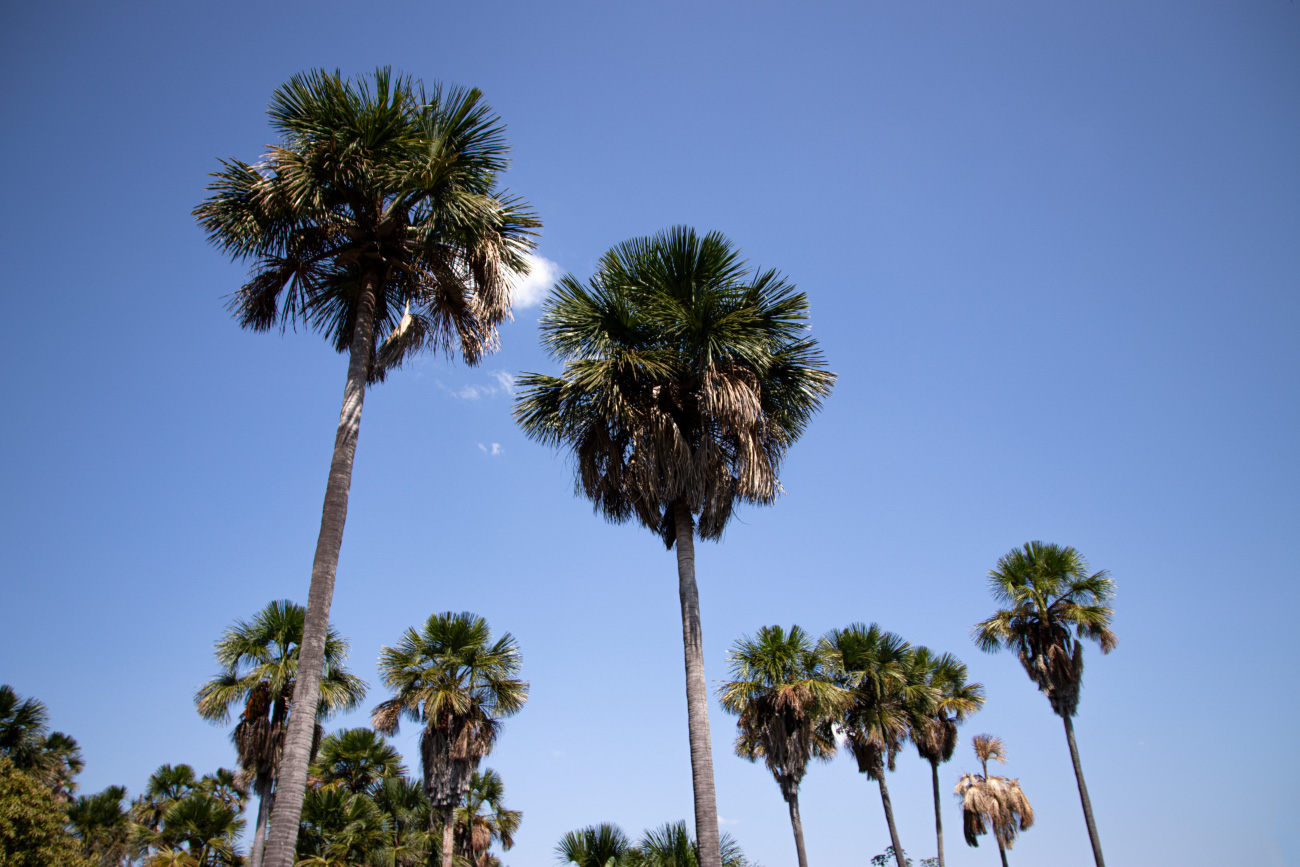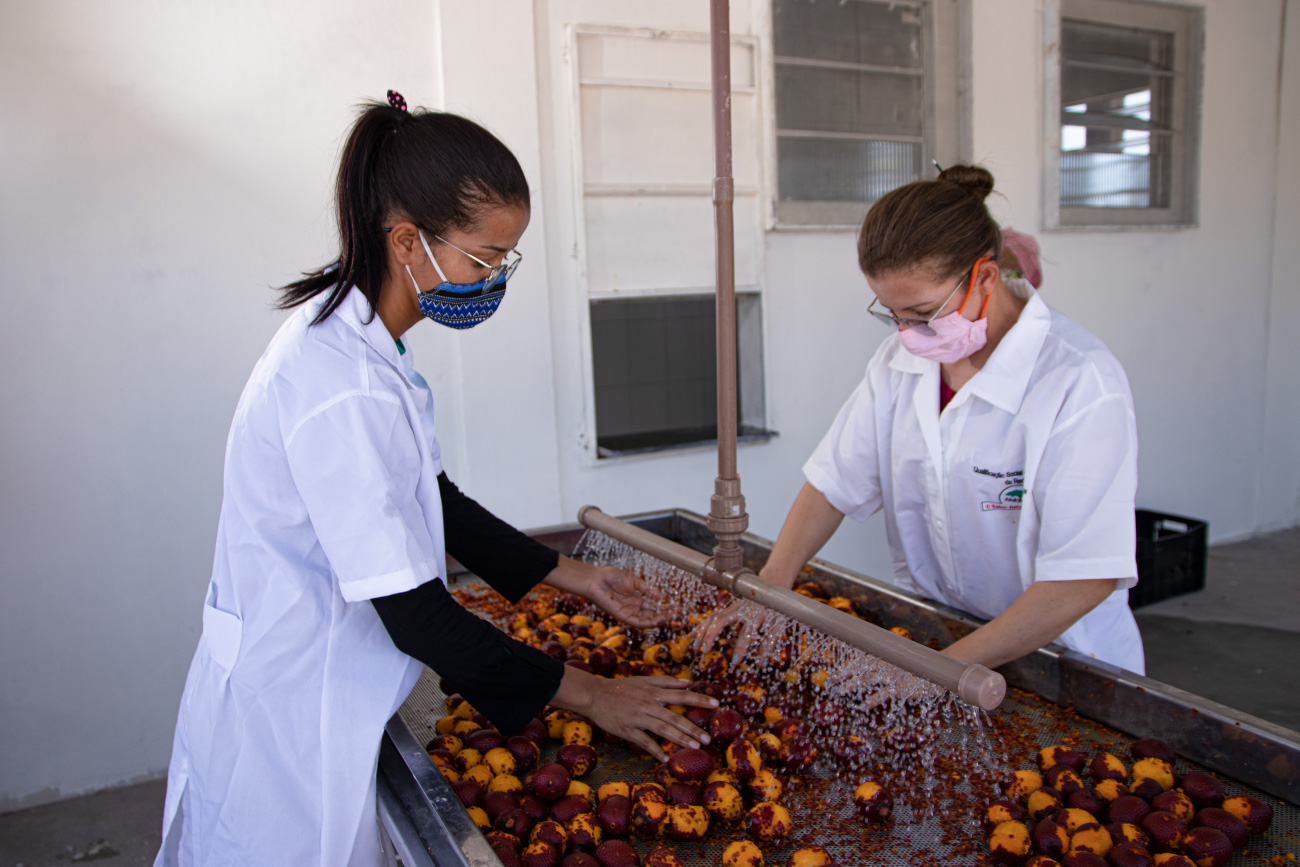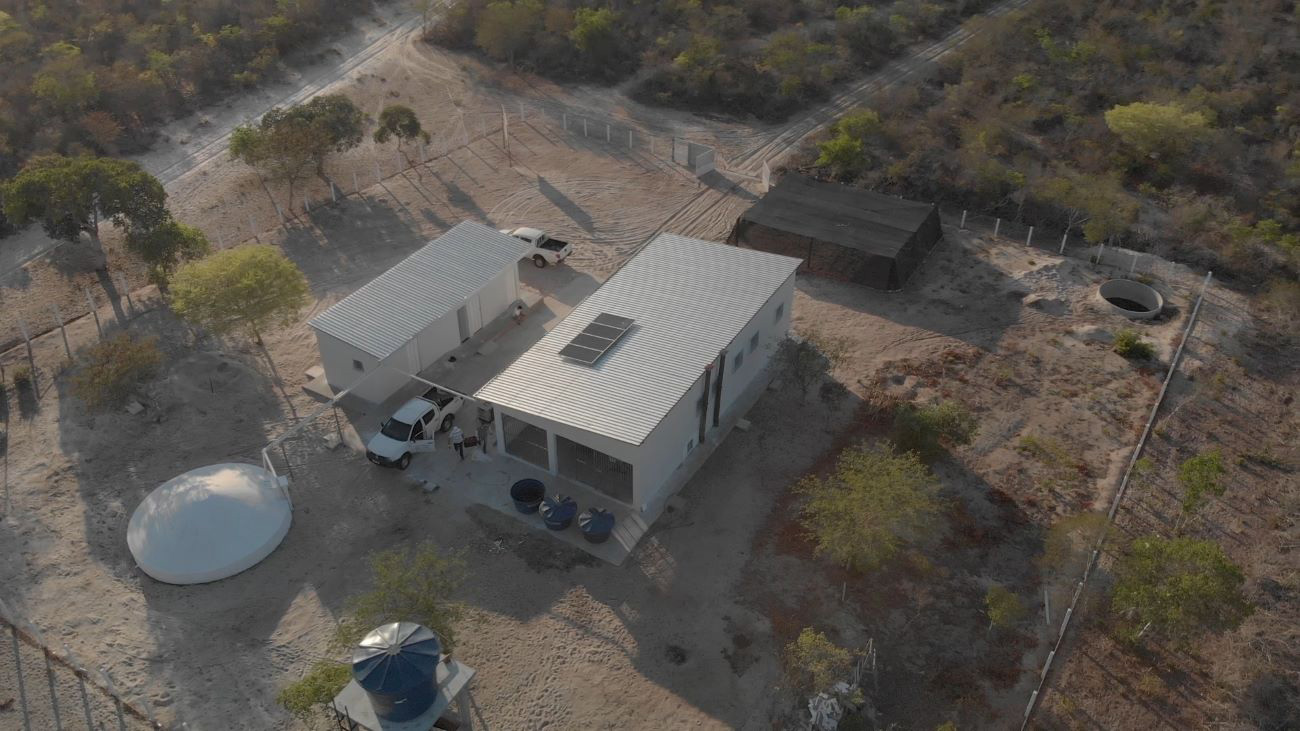Forging new connections through the “tree of life”
IFAD Asset Request Portlet
Asset Publisher
Forging new connections through the “tree of life”
Estimated reading time: 4 minutes
The residents of Brejo Dois Irmãos had long felt isolated. Brejo, a tiny community in Brazil’s north-eastern semi-arid region, is not easy to reach: the only way in or out is a 12-kilometre dirt road running through a swamp, which most vehicles can’t manage. And with no way to sell their most important crop – burití (Mauritia flexuosa), a native palm tree – the 200 families living there frequently felt forgotten by the outside world.
In the indigenous Tupi-Guarani language, burití means “tree of life.” Every part of the plant has a use: the trunk and leaves are used in construction; the fibres are ideal for rope-making; and the fleshy, sweet fruit, high in vitamin C, makes tasty juices, liquor, ice creams, jams and sweets. The seeds yield an oil rich in vitamin A, useful in a variety of cosmetic and medicinal products.
Nevertheless, burití held little economic value beyond Brejo. It was just too labour-intensive to process, and even harder to market. Farmers had turned to sugar cane, which was much less profitable but easier to sell. Yet the sugar cane proved to be unsustainable, damaging the soil and draining the already scarce water supply.
A new way forward for burití
In 2017, the IFAD-supported Pro-semiarid project came to the area. The staff began discussions with residents about what the project could offer and how it could help.
Ultimately, staff and local residents decided together on a plan of action: the project would provide the training, equipment and technical assistance needed to make the sugar cane production more sustainable; introduce beekeeping as a way to add another income stream; and, most importantly help the residents improve how the burití was processed and marketed.

The first step was to help local residents see the burití from a new perspective.
“When the project arrived, the pedagogical part, the training, was very important,” says Cosme Alves de Sousa, the former president of the Brejo Dois Irmãos Community Association. “We would have one or two training sessions a week, and that helped us understand the value of what we have here.”
As the project staff had recognized, burití is a great example of a neglected and under-utilized native species – that is, a species capable of providing immense nutritional and livelihood benefits (and increased incomes) for its custodians while preserving local ecosystems and biodiversity, but whose potential is going untapped.
A fresh start for burití processing
To bring Brejo’s burití products to the world, the project next had to improve how the fruit was processed. Traditionally, this was a women’s activity, and it was hard work.
“It was very difficult and time-consuming,” Eliane das Virgens Ribeiro, President of the Brejo Dois Irmãos Community Association, tells us. “We would spend the whole day sitting on the floor: we’d peel the fruits one by one, take them into the sun to dry, bring them back, wash them again, put them back in the sun…”
With the project’s help, the community bought simple processing machines that peel, squeeze and crush the fruit in one go, extract the seed and juice, and turn the flesh into a dense paste, ready for use in jams and sweets. Suddenly, what used to take days of labour could be completed in a matter of hours.
“It’s a huge improvement for us,” Eliane adds, with a mix of satisfaction and relief on her face.

Later, the project helped the community establish a processing plant. Construction was difficult on the sandy soil, and due to Brejo’s remoteness, few suppliers would deliver construction materials. Sometimes they’d just leave the materials halfway down the road, and community members had to arrange to collect it. But, at last, the plant was ready. It’s now processing 40 tonnes of fruit annually, which will soon increase to 50 tonnes a year.
Finally, the project connected Brejo to the internet, and producers began using social media to make a virtual shopfront for their products. As they gained exposure, the Slow Food Foundation, the global advocate for healthy, sustainable food, agreed to become a project partner and promote burití. Slow Food has proven to be an invaluable ally in giving Brejo’s products more visibility and exploring their nutritional and cultural value.
A comprehensive transformation
Today, the whole community is involved in the project’s activities. Meetings and training sessions take place at the local school. The project has invested in trainings on computer use, business management, administration and marketing. No longer does Brejo feel cut off from the rest of the world.
Burití processing has increased household incomes by 30 to 40 per cent, and the updated procedures have greatly equalized the work involved. In fact, having shown how a product traditionally produced by women could benefit the entire community, the project has taken further steps to promote gender equality.
Women now play an active part in the community’s decision-making processes: indeed, the president, treasurer, and secretary of the local producers’ association are all young women who are leading their rural community’s integration into global food systems.
As Litercina Serra, an experienced burití farmer, says, “Thank God for letting us cross paths with someone to make this beautiful, cool thing possible.”
Read more about IFAD’s work in Brazil.
Publication date: 08 February 2022